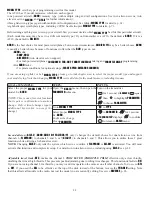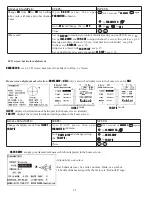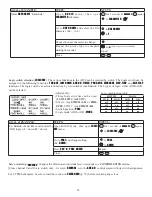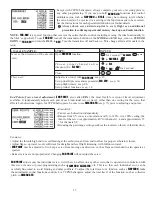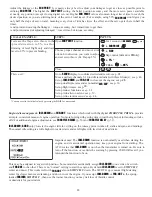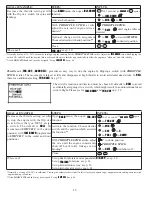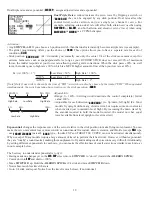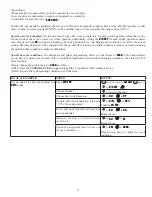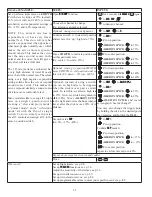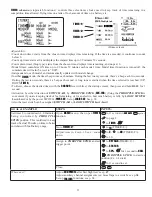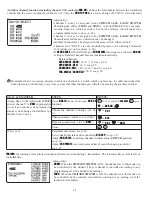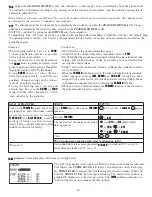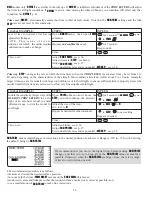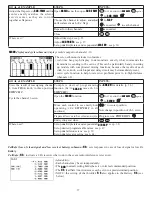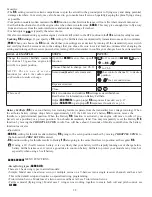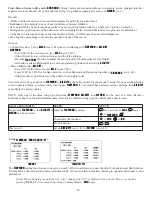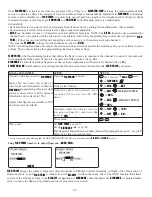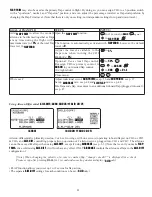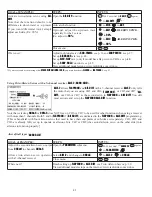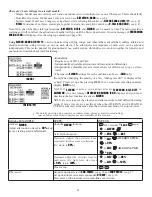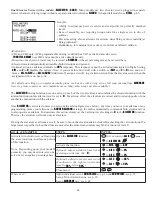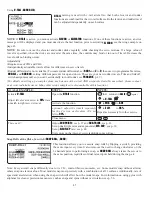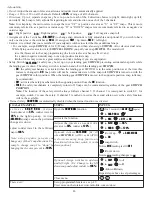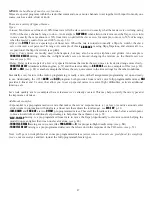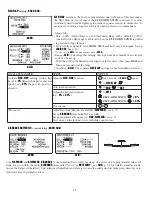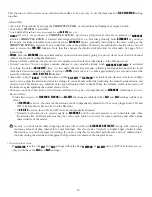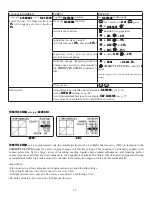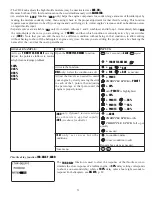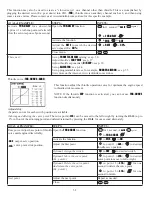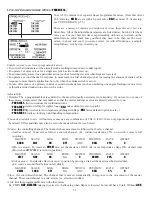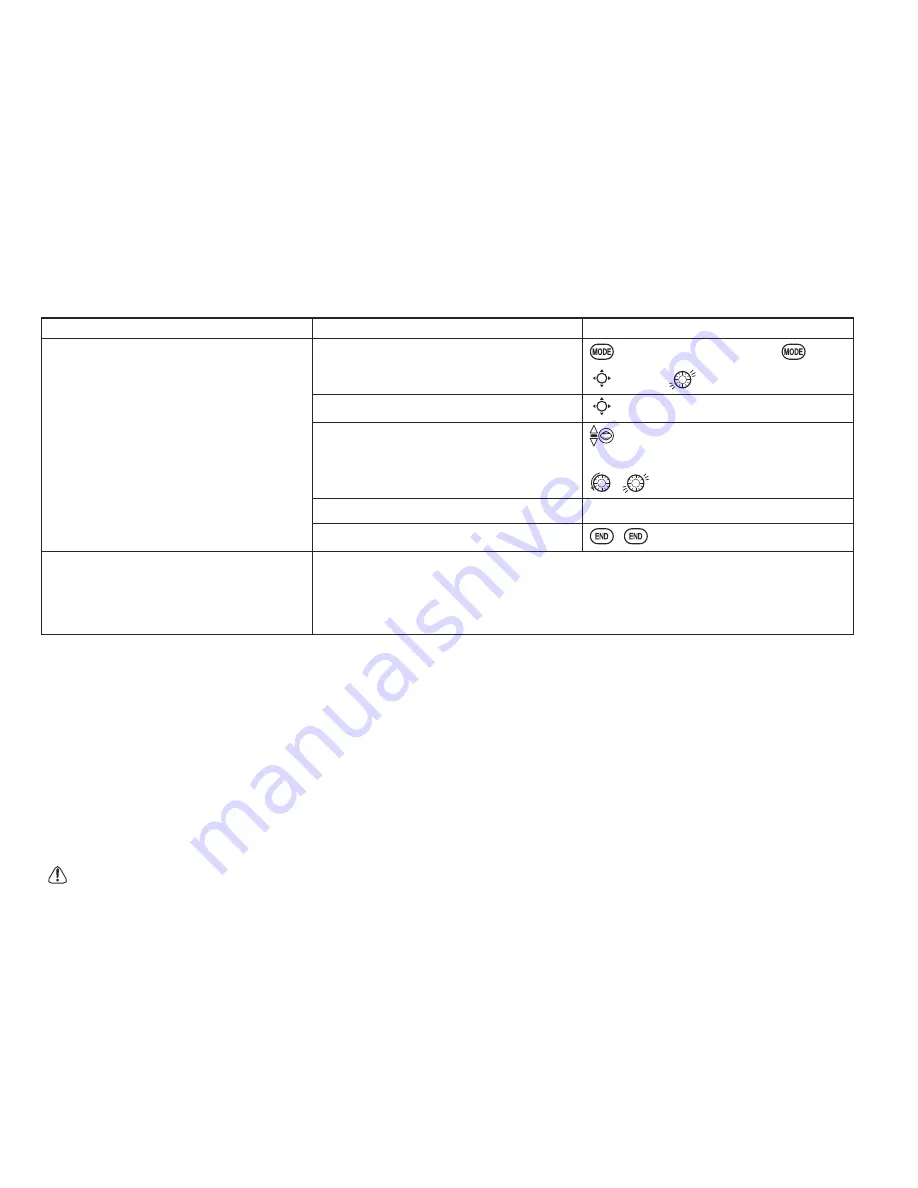
38
Examples:
• The
F/S
VHWWLQJLVXVHGLQFHUWDLQFRPSHWLWLRQVWRVSLQWKHDLUFUDIWWRWKHJURXQGSULRUWRÀ\LQJDZD\DQGGRLQJSRWHQWLDO
GDPDJHHOVHZKHUH&RQYHUVHO\PD\DOVREHXVHGWRJRWRQHXWUDORQDOOVHUYRVKRSHIXOO\NHHSLQJWKHSODQHÀ\LQJDVORQJ
as possible.
• Competition modelers often maintain the
NOR
function so that brief interference will not affect their model's maneuver.
• Set the throttle channel so that the engine idles when there is interference (
ACRO
7KLVPD\JLYHHQRXJKWLPHWRÀ\DZD\
from and recover from the radio interference and minimize damage if crashed.
• For helicopters,
NOR
is typically the safest choice.
• We also recommend setting a gasoline engine's electronic kill switch to the OFF position in the
F/S
function for safety reasons.
Updating
F/S
Settings:
If you specify a
F/S
setting, the FailSafe data is automatically transmitted once each two minutes.
(
PCM
) When you choose the
F/S
mode, check that your settings are as desired by turning off the transmitter power switch
and verifying that the servos move to the settings that you chose. Be sure to wait at least two minutes after changing the
VHWWLQJDQGWXUQLQJRQWKHUHFHLYHUSRZHUEHIRUHWXUQLQJRIIWKHWUDQVPLWWHUWRFRQ¿UP\RXUFKDQJHVKDYHEHHQWUDQVPLWWHG
GOAL of EXAMPLE:
STEPS:
INPUTS:
Change the receiver FailSafe command
for channel 8 (gasoline engine kill
switch) to a preset position.
N O T E : T h i s i s o n e o f s e v e r a l
functions for which the radio requires
FRQ¿UPDWLRQWRPDNHDFKDQJH
Open the
BASIC
menu, then open
F/S
function.
for 1 second.
(If
ADVANCE
,
again.)
C
to
F/S
.
Choose Channel to change. (ex: Ch. 8)
C
to Ch 8.
Set and
FRQ¿UP
fail safe command.
that controls channel 8 to desired
OFF
position.
for 1 second to store.
Repeat as desired.
Close.
Where next?
:DLWWZRPLQXWHVDQGFRQ¿UP
F/S
settings as described above.
Read below for information on Battery FailSafe.
Adjust
END POINTs
to gain proper
F/S
responses if needed: see p. 27.
Adjust
SUB-TRIM
to gain proper
F/S
responses if needed: see p. 36.
Battery FailSafe
(
F/S
): a second battery low warning feature (separate from the transmitter low voltage warning). When
WKH DLUERUQH EDWWHU\ YROWDJH GURSV EHORZ DSSUR[LPDWHO\ 9 WKH*UHFHLYHU¶VEDWWHU\
F/S
function moves the
throttle to a predetermined position. When the Battery
F/S
function is activated, your engine will move to idle (if you
haven't set a position) or a preset position. You should immediately land. You may temporarily reset the Battery
F/S
function by moving the
THROTTLE STICK
to idle. You will have about 30 seconds of throttle control before the battery
function reactivates.
Adjustability:
•
NOR F/S
setting for throttle results in Battery
F/S
going to the servo position reached by moving
THROTTLE STICK
to
the bottom with
TRIM LEVER
centered;
•
F/S
position setting for throttle results in Battery
F/S
also going to the same throttle servo position as the regular
F/S
.
If using a 6V (5-cell) receiver battery, it is very likely that your battery will be rapidly running out of charge before
battery FailSafe takes over. It is not a good idea to count on battery FailSafe to protect your model at any time, but
especially when using a 5-cell battery.
ACRO ADVANCE
MENU FUNCTIONS:
Aircraft wing types
(
ACRO
GLID
):
There are 3 basic wing types in aircraft models:
• Simple. Model uses one aileron servo (or multiple servos on a Y-harness into a single receiver channel) and has a tail.
This is the default setup and requires no specialized wing programming.
• Twin Aileron Servos. Model uses 2 aileron servos and has a tail. see Twin Aileron Servos.
• Tail-less model (flying wing). Model uses 2 wing servos working together to create both roll and pitch control. see
ELEVON
.

